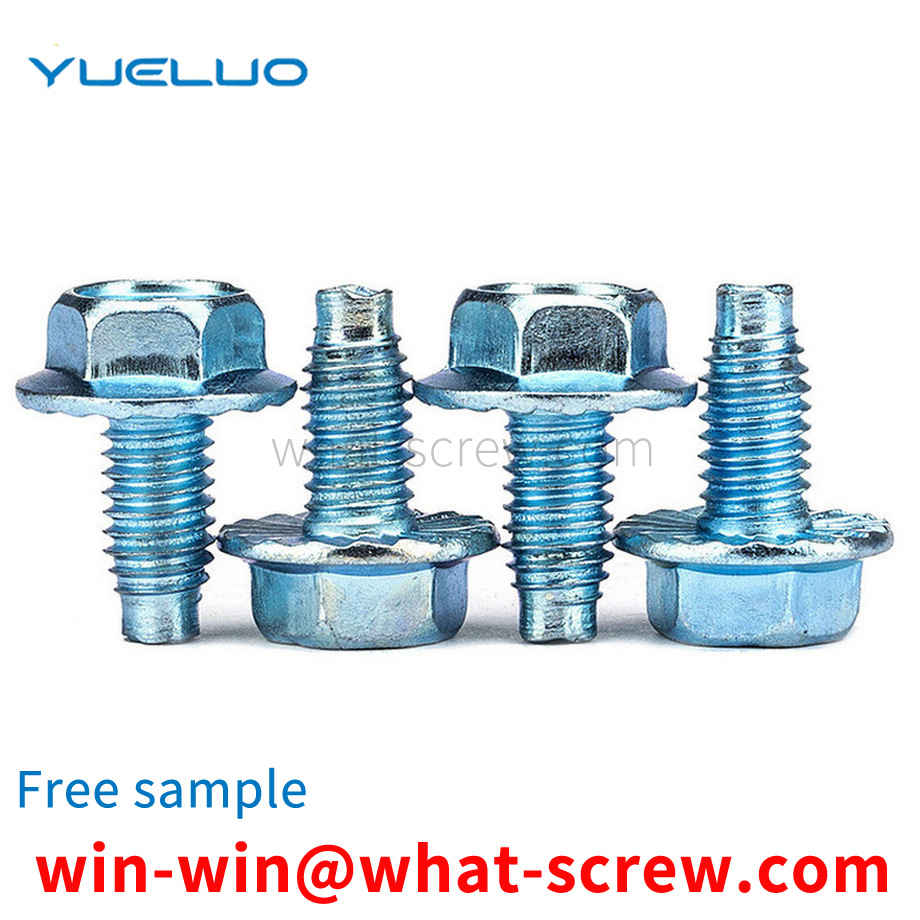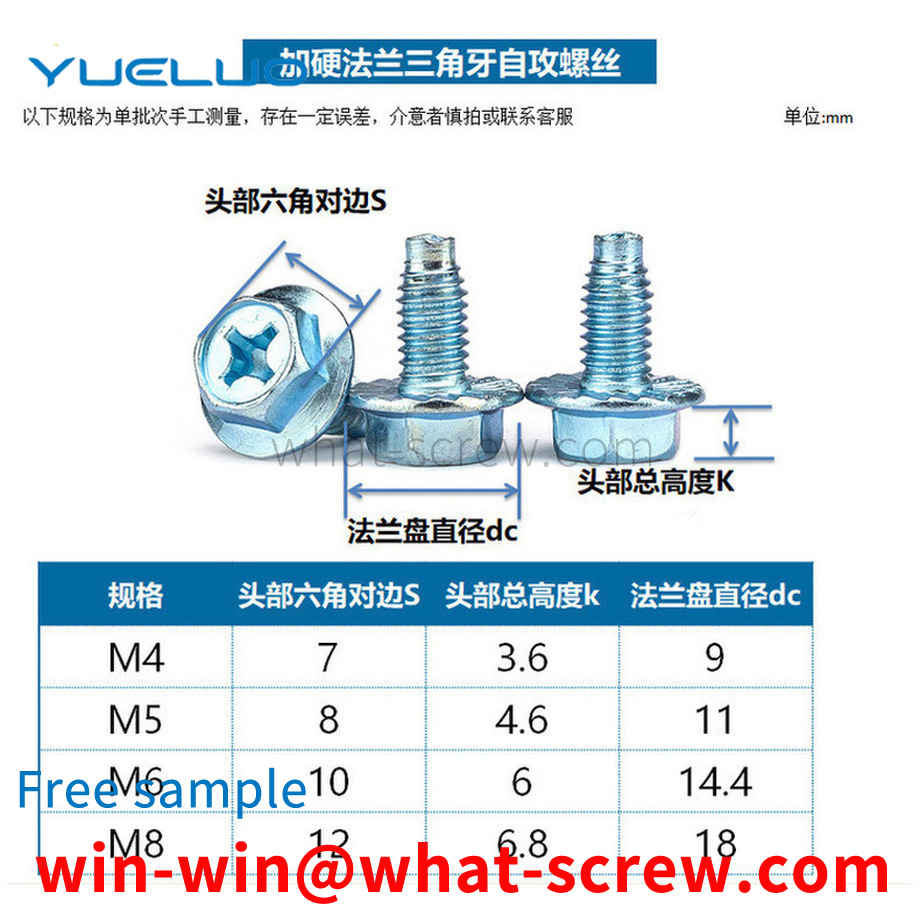Screw, some people call it screw [Screw] (screw), screw (screw rod). In fact, the screw is a general term, and the screw and the screw rod are different from each other. Screws are generally called wood screws; they are the ones with a pointed end at the front and a larger pitch. They are generally used to fasten wooden and plastic parts. The screw rod is a machine screw (machine screw), which is the kind of flat head at the front end. The pitch is small and uniform. It is generally used to fasten metal and machine parts.
At present, the industry uses the pure manual installation method to install the elastic cylindrical pin, that is, the staff first holds the tool holder; then, manually puts the elastic cylindrical pin into the elastic cylindrical pin hole of the tool holder; then, use the body to align the tool holder For positioning, use a hammer to knock the elastic cylindrical pin into the tool holder. This installation method requires manual operation throughout the entire process, and the work efficiency is low. Moreover, when the hammer is knocked, the staff needs to use the body to position the tool holder, there is a risk of smashing and injuring people, and there is a potential safety hazard. In addition, hammering will cause deformation of the elastic cylindrical pin, and the qualification rate of assembly is low.
The self-tapping locking screw is composed of three parts: the head, the stem and the end of the stem from beginning to end. The composition of each self-tapping screw has four major elements: head shape, wrenching method, thread type, and end type. Head Shapes - Head shapes come in all shapes and sizes. There are round head (semi-round head), oblate head, round head flange (with pad), oblate head flange (with pad), pan head, pan head flange (with pad), countersunk head, semi-countersunk head, Cylinder head, spherical cylinder head, horn head, hexagonal head, hexagonal flange head, hexagonal flange (with gasket), etc. Wrench Styles - There are various ways of wrenching. External wrench: hexagonal, hexagonal flange, hexagonal flange, hexagonal flower shape, etc.; internal wrench: slotted, cross groove H type (Phillips), cross groove Z type (Pozidriv), cross groove F type (Frearson) , Square groove (Scrulox), compound groove, internal spline, internal hexagon flower (plum groove), internal triangle, internal hexagon, internal 12-angle, clutch groove, six-blade groove, high torque cross groove and so on. Thread Types - There are many types of threads. There are self-tapping threads (wide thread), machine threads, drywall screw threads, fiberboard screw threads, and some other special threads. In addition, the thread can be divided into single lead (single head), double lead (double head), multi-lead (multiple head) and high and low thread double head thread. End type - The end type mainly includes saw end and flat end. However, according to the function of use, grooves, grooves, incisions or parts with a cutting function can be processed. In some standards, the same saw end or flat end, there are different forms. There are various changes in the head shape, wrenching method, thread type and shank end type of self-tapping screws. They can be combined with each other to show many different products belonging to the category of self-tapping screws.
Anti-corrosion technology Stainless steel screws are made of metal, and there are four main methods for metal anti-corrosion, namely the properties of the material itself, the environment of use, the interface between materials and the environment, and the improvement of the metal structure design. If a complete anti-corrosion alloy is used to make stainless steel Screws, unless there is a special need, are not cost-effective in terms of economics, and it is also impractical to completely isolate the appearance of the screw from environmental elements that can cause corrosion. Improving the metal structure design can improve the influence of special circumstances under certain conditions, but the design of most stainless steel screws cannot be fully corrected, and its maintenance effect is not permanent, so this method cannot basically solve the problem, as long as it is on the surface. Top anti-corrosion, that is, surface anti-corrosion treatment is the most widely used method. The anti-corrosion treatment on the surface of stainless steel screws refers to the use of various methods to apply a protective layer on the metal surface. The purpose of avoiding or mitigating corrosion. The protection layer should be able to meet the following requirements: 1. Corrosion resistance, wear resistance, high hardness, 2. The structure is tight, intact, and the pores are small. 3. It has strong separation and good adhesion with the base metal. 4. It is evenly distributed and has a certain thickness. The maintenance layer is usually divided into two types: metal coating and non-metallic coating. Metal coating refers to the use of metal or alloy with strong corrosion resistance to form a maintenance layer on the surface of metal that is easy to corrode. This coating is also called plating. There are quite a few methods and varieties to produce metal coatings, the most common of which is electroplating, followed by molten metal immersion plating (hot dipping) and chemical surface treatment. Non-metallic coating refers to the use of organic polymer materials such as paint and inorganic materials such as ceramics to form a protective layer on the surface of metal equipment or parts. The protective layer can completely isolate the base metal from the environmental medium and prevent the base metal from corrosion due to contact. Corrosion is formed in the medium of stainless steel standard parts.
hand screw is a screw with a plastic head, and the user fixes the hand screw by turning the plastic head by hand. At present, a hand-tight screw is disclosed in the market publication number CN202203253U, which includes a plastic head and a screw rod, the plastic head and the screw rod are connected together, and the height of the plastic head is higher than that of an ordinary screw, and the height is 6 cm. The screw of the hand screw is fixed in the plastic head by glue. After a period of use, the aging of the glue leads to the loosening of the screw and the plastic head. When the plastic head is stressed, the screw rod comes out of the plastic head, which affects the normal use of the hand screw.
We have many years of experience in the production and sales of screws, nuts, flat washers, etc. The main products are: boxed pan head hexagon socket head bolts, open body wire screws, GB6179 hexagon slotted nuts, cylindrical pins and other products, we can provide you with suitable products Your fastener solution.



















 Service Hotline
Service Hotline




